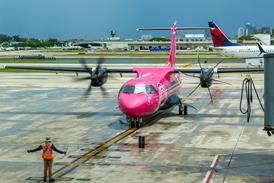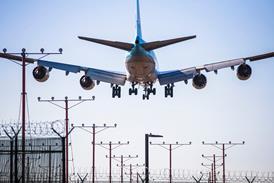MD Helicopters is the latest rotorcraft manufacturer to join the crowded field vying to supply the US Army’s new trainer aircraft.
The company on 5 June said it plans to offer its MD 530F light-single as an option to replace the army’s fleet Airbus Helicopters UH-72A Lakota trainers.
Under the Flight School Next programme, the army is seeking not just a new basic training helicopter but also a contractor-operated service that will handle pilot trainee instruction and aircraft sustainment.

MD will be competing in a crowded field that includes both military aviation heavyweights like Bell, Lockheed Martin, Airbus and Leonardo, and newcomers to the defence space such as Robinson Helicopters.
A range of strategies are being pursued by the various contenders, with some companies focusing on the particular attributes of their aircraft and others playing more toward their strengths in military training and instruction.
MD seems to be among the former group, highlighting benefits of the MD 530F as a trainer platform.
“The MD 530F’s fully articulated, five-bladed rotor system provides handling characteristics that closely replicate those of the UH-60M Black Hawk, AH-64E Apache and CH-47F Chinook – allowing students to train in a platform that feels like the real thing from the start,” the company says.
The Mesa, Arizona-based manufacturer is touting other specific features, saying hydraulic-free flight controls and a night-vision-compatible cockpit make the 530F well-suited for the trainer mission.
“The MD 530F is not just ready for that mission, it was built for it,” says chief executive Ryan Weeks.
Senior army leaders have said they want a simplified, lightweight, single-engined platform to replace the Lakota, which features a high-degree of onboard automation.
According to top army officers, that has caused a deterioration in the flying skills of new pilots since the UH-72A became the service’s primary trainer in 2020.
“A lot of what I’m hearing is: they’re great system operators, but they don’t know how to fly the aircraft,” said Major General Clair Gill, the US Army’s senior aviation officer, at the annual Army Aviation Association of America conference in May.
The UH-72A and newer UH-72B separately serve in a utility role with Army National Guard.
Arrayed against MD in the Flight School Next competition are a variety of competing bids.
Lockheed is leaning heavily on its expertise as a provider of training solutions, focusing less on the specific aircraft it will propose. Company officials tell FlightGlobal they will select an existing model based on the army’s formal requirements.
Robinson has gone in the other direction, focusing heavily on the ultra-low operating costs and high availability of its R66 platform, while partnering with aviation training provider M1 Services to develop the instructional portion of the contract.
Bell has adopted a hybrid approach, touting both the suitability of its 505 light-single for the trainer mission and the company’s deep experience with army aviation to develop a training school that addresses both the performance and financial issues currently facing the army.
Leonardo has suggested its AW119-based TH-73 helicopter, which is already used by the US Navy, Marine Corps and Coast Guard for basic rotary-wing instruction.
Meanwhile, incumbent Airbus is making the case that the army should keep the Lakota, but paired with a modernised instructional curriculum and training programme to address the service’s performance concerns.
The company cites the UH-72’s sterling safety record, with no fatal accidents over five years and 675,000 flight hours as the army’s primary trainer aircraft, as supporting evidence for keeping the twin-engined type.


























